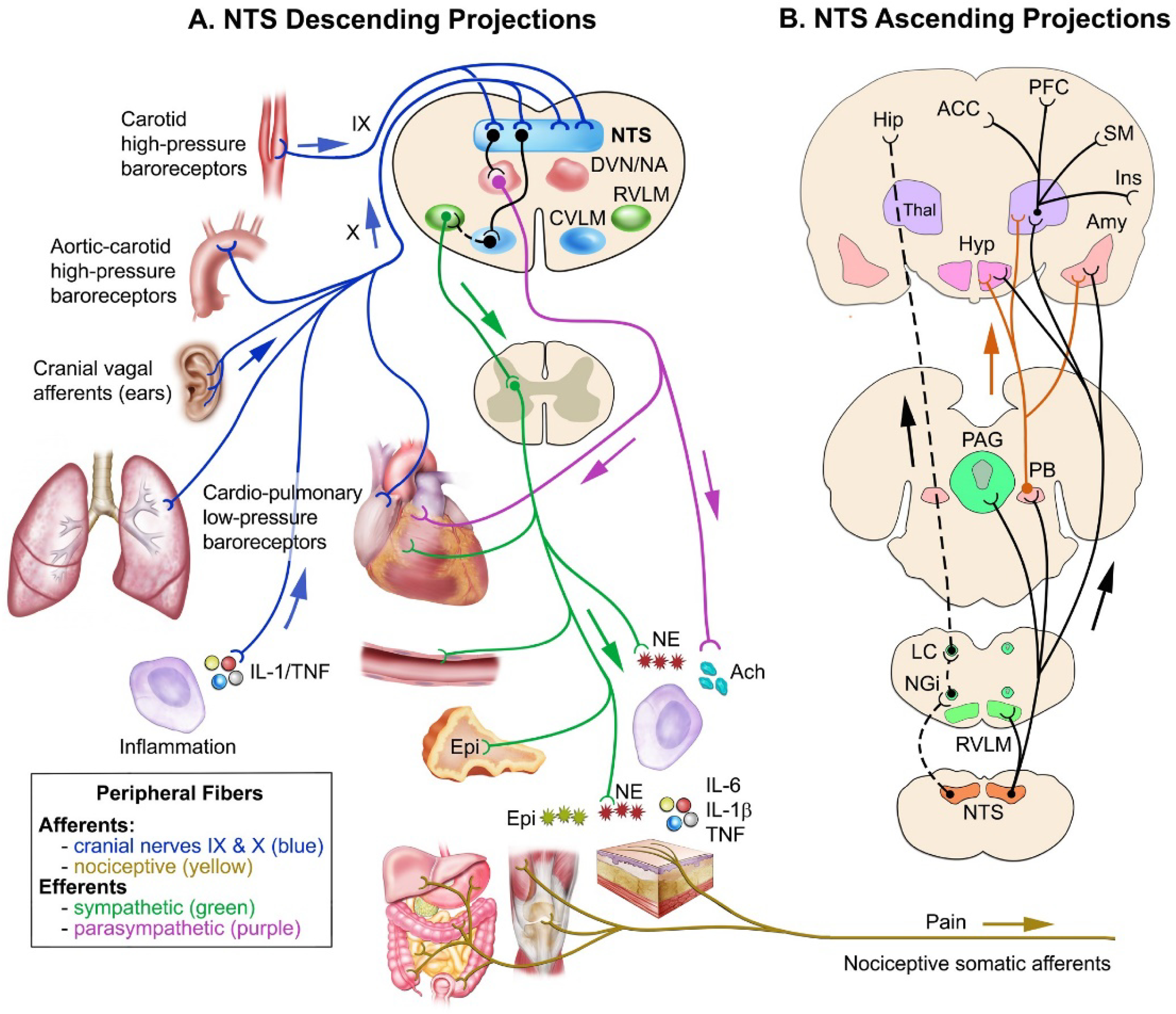FIGURE 1:

Schematic representation of key nuclei and pathways involved in the interactions between cardiovascular and pain modulatory systems. Panel A: The nucleus of the solitary tract (NTS), afferent input, and descending projections. NTS in the medulla oblongata received inputs from the glossopharyngeal (IX) nerve originating from carotid high-pressure baroreceptors and the vagus (X) nerve originating from the aortic high-pressure baroreceptors, cardiopulmonary low-pressure baroreceptors, concha, lung’s stretch-mechanoreceptors, lung’s chemoreceptors, and inflamed tissues. Afferents from the NTS excite the caudal ventrolateral medulla (CVLM), which in turn inhibits neurons in the rostral ventrolateral medulla (RVLM). Thus, there is a reduction in the RVLM tonic excitation of spinal intermediolateral neurons and a reduction in the sympathetic output to the heart and blood vessels. Afferents from the NTS also excite neurons in the dorsal vagal motor nucleus (DVN and nucleus ambiguous (NA), which enhances parasympathetic output. The resulting autonomic efferent balance diminishes heart rate and AP by a mechanism commonly referred to as the baroreflex. This change in autonomic balance can modulate inflammation, às a result, inflammatory pain. The baroreflex response is associated with increases in the release of acetylcholine (Ach) from vagal efferents, which reduces inflammation by inhibiting the secretion of pro-inflammatory cytokines from macrophages. Also, there is the sympathetic release of norepinephrine (NE) and adrenal epinephrine, which have both pro-inflammatory and anti-inflammatory effects depending on the stage of the inflammation. Panel B: NTS ascending afferent projections to rostral CNS sites. NTS afferents project directly to the parabrachial nucleus (PB), periaqueductal gray (PAG), amygdala (Amy), hypothalamus (Hyp), and thalamus (Thal), involved in autonomic and emotional responses to pain. PB provides a parallel ascending pathway to NTS afferents (continuous orange line). Also, the NTS indirectly projects to the: (1) insula (Ins), somatosensory cortex (SM), prefrontal cortex (PFC), anterior cingulate cortex (ACC) via the thalamus, (2) CA1 region of the dorsal hippocampus (Hip) and amygdala, through the nucleus paragigantocellularis (NGi) and locus coeruleus (LC) (broken black line). The ascending activation of these higher CNS structures by NTS afferents initiates a pattern of autonomic, sensory, and behavioral responses. Conversely, several CNS areas (e.g., Hyp and PAG) exert a descending modulation on NTS and RVLM mediated autonomic activity (not depicted). Similarly, respiratory centers, as well as from peripheral visceral and somatosensory afferents, exert an overall inhibitory influence on the baroreflex nuclei at the brainstem (not depicted).
